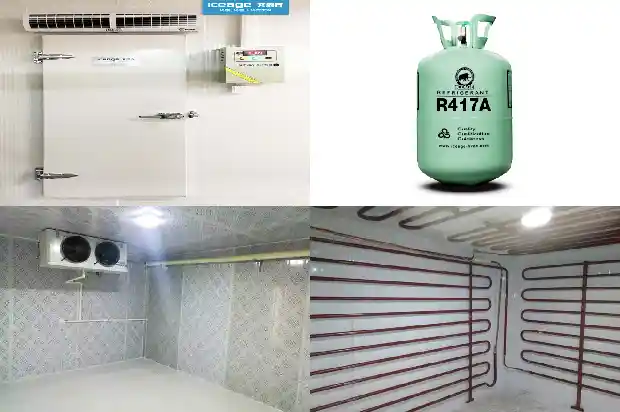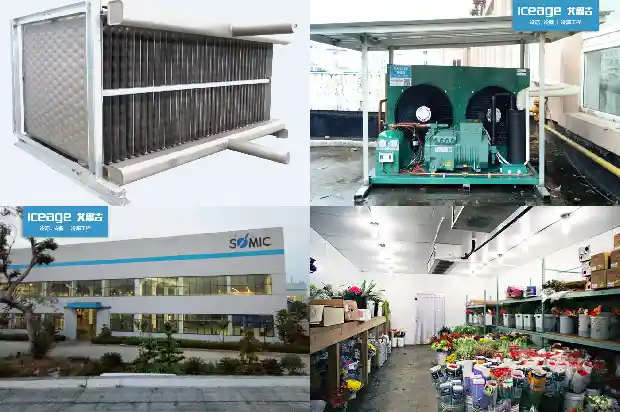Introduction to Vapor Barrier of Cold Storage and Moisture Protection of Equipment
2024-10-06
Moisture-proofing and vapor barrier of the envelope structure of vegetable fresh-keeping cold storage in cold storage equipment. Taking moisture-proof and vapor barrier measures for the envelope structure of cold storage is also necessary. Otherwise, the thermal insulation performance of the thermal insulation material will deteriorate. This is the reason why the thermal insulation performance of the cold storage body is good at the beginning of use, but after a period of time, the thermal insulation effect deteriorates.
Since water vapor permeates from the high-temperature side to the low-temperature side, the moisture-proof and vapor barrier layer should be located on the side with a high temperature of the thermal insulation layer. In this case, attention should be paid. There must not be any ambiguity.
Therefore, a very good solution has been obtained for the moisture-proof problem of the envelope structure of the fresh-keeping cold storage of cold storage equipment. At this time, it is necessary to maintain a very good attitude to face it. This is the most critical element. Everything else is an irrational approach.
Key points for setting up the moisture-proof and vapor barrier layer of the cold storage warehouse.
The structure of the vapor barrier layer and moisture-proof layer of the warehouse shall comply with the following regulations:
(1) The outside of the brick exterior wall should be plastered.
(2) The vapor barrier layer of the exterior wall should overlap with the vapor barrier layer or moisture-proof layer above and below the ground thermal insulation layer.
(3) Moisture-proof layers should be set on both sides of the thermal insulation layer of the partition wall between the cooling room or freezing room.
(4) A moisture-proof layer should be set at the bottom of the thermal insulation layer of the partition wall.
(5) Moisture-proof layers or vapor barrier layers should be made on the upper, lower, and surrounding sides of the thermal insulation layer of the floor and ground.
For the moisture-proof and vapor barrier materials used in cold storage, generally the following requirements should be met:
(1) Small vapor permeability coefficient.
(2) Low water absorption and good water resistance.
(3) Good mechanical properties.
(4) Good physical and chemical properties. It should be non-toxic, non-combustible or difficult to burn, corrosion-resistant, and aging-resistant. The material should not be brittle when cooled and not soften when heated.
(5) Good construction performance.
Since water vapor permeates from the high-temperature side to the low-temperature side, the moisture-proof and vapor barrier layer should be located on the side with a high temperature of the thermal insulation layer. In this case, attention should be paid. There must not be any ambiguity.
Therefore, a very good solution has been obtained for the moisture-proof problem of the envelope structure of the fresh-keeping cold storage of cold storage equipment. At this time, it is necessary to maintain a very good attitude to face it. This is the most critical element. Everything else is an irrational approach.
Key points for setting up the moisture-proof and vapor barrier layer of the cold storage warehouse.
The structure of the vapor barrier layer and moisture-proof layer of the warehouse shall comply with the following regulations:
(1) The outside of the brick exterior wall should be plastered.
(2) The vapor barrier layer of the exterior wall should overlap with the vapor barrier layer or moisture-proof layer above and below the ground thermal insulation layer.

(3) Moisture-proof layers should be set on both sides of the thermal insulation layer of the partition wall between the cooling room or freezing room.
(4) A moisture-proof layer should be set at the bottom of the thermal insulation layer of the partition wall.
(5) Moisture-proof layers or vapor barrier layers should be made on the upper, lower, and surrounding sides of the thermal insulation layer of the floor and ground.
For the moisture-proof and vapor barrier materials used in cold storage, generally the following requirements should be met:
(1) Small vapor permeability coefficient.
(2) Low water absorption and good water resistance.
(3) Good mechanical properties.

(4) Good physical and chemical properties. It should be non-toxic, non-combustible or difficult to burn, corrosion-resistant, and aging-resistant. The material should not be brittle when cooled and not soften when heated.
(5) Good construction performance.

Related Articles
- Introduction to Inspection and Handling Methods for Refrigerant Leak in Cold Storage
- Introduction to Control Valves in Refrigeration Systems
- Introduction to Basic Types of Cold Storage
- Introduction to Lithium Bromide Absorption Chillers
- Introduction to the Advantages of Dual - temperature Cold Storage
- Introduction to Various Water Tanks in Air - conditioning Systems
- Introduction to the Cleaning Processes and Methods of Heat Exchangers and Cooling Towers
- Introduction to Six Kinds of Two-stage Compression Refrigeration Systems
- Introduction to Key Points of Compressor Grouping in Quick-freezing Cold Storage
- Introduction to the Construction and Features of Cold Storage in Cold Chain Logistics
- All-round Introduction to Condensers and Evaporators!
- Introduction to Oil Collector in Refrigeration System
- Technical Introduction of Process Cooling Water System
- Introduction to Air-cooled Chiller
- Introduction to Five Classification Functions of Cold Storage Installation for Refrigeration
- Introduction to Precooling Methods for Fruits and Vegetables
- Introduction to the Relationship between Refrigerants and Cold Storage Temperatures
- Introduction to Types of Condensers in Cold Storage
